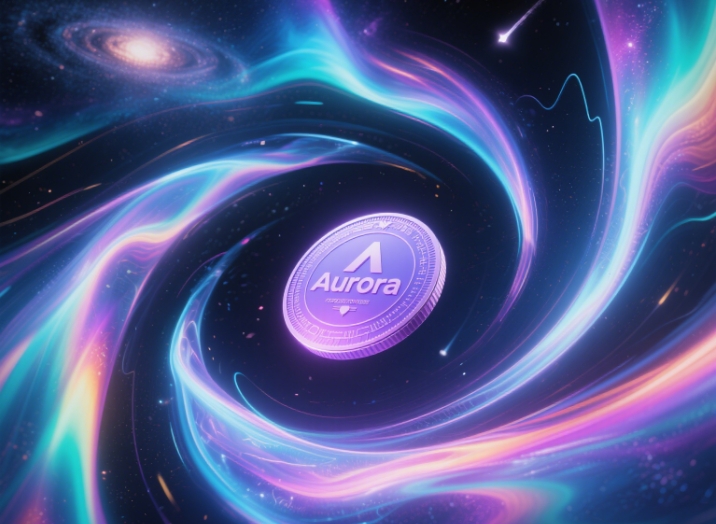the Aurora Engine (an Ethereum Virtual Machine (EVM) implementation) and the Aurora Bridge (a trustless cross-chain bridge)
What is Aurora? Bridging Ethereum and NEAR Protocol
Aurora is an Ethereum-compatible blockchain ecosystem built on the NEAR Protocol, designed to solve Ethereum's scalability challenges while maintaining full compatibility with its tools and decentralized applications (dApps). By combining Ethereum's developer-friendly environment with NEAR's high-throughput, low-cost infrastructure, Aurora positions itself as a critical player in the evolution of decentralized finance (DeFi) and Web3.
At its core, Aurora comprises two components: the Aurora Engine (an Ethereum Virtual Machine (EVM) implementation) and the Aurora Bridge (a trustless cross-chain bridge). This architecture allows developers to deploy Ethereum dApps on Aurora with minimal code changes, while users benefit from transaction fees that are 1,000x lower than Ethereum's mainnet.
Aurora's Technical Advantages Over Competing Layer 2 Solutions
Aurora differentiates itself through its seamless integration with the NEAR Protocol. Unlike optimistic rollups or zk-rollups, Aurora operates as an independent blockchain while leveraging NEAR's sharded, proof-of-stake (PoS) consensus mechanism. Key technical advantages include:
Sub-Second Finality: Transactions are confirmed in under 2 seconds, compared to Ethereum's ~15 seconds or optimistic rollups' 7-day withdrawal periods.
ETH-Denominated Gas Fees: Users pay fees in ETH, eliminating the need to hold native tokens for transactions.
Horizontal Scalability: NEAR's Nightshade sharding allows Aurora to scale beyond 100,000 transactions per second (TPS) as demand grows.
This combination makes Aurora a pragmatic choice for DeFi protocols, NFT marketplaces, and enterprise-grade dApps requiring high throughput.
Aurora's Ecosystem: DeFi, NFTs, and Beyond
Aurora's ecosystem has rapidly expanded since its 2021 launch. Notable projects include:
Trisolaris: Aurora's leading decentralized exchange (DEX), with over $1B in total volume.
Bastion: A lending protocol offering undercollateralized loans via reputation-based scoring.
Aurigami: A yield optimization platform tailored for cross-chain liquidity.
The network also supports NFT projects like Aurora Punks and Meta Pool, which leverage Aurora's low minting costs (<$0.01 per transaction). With over 150 dApps deployed, Aurora has become a hub for developers seeking Ethereum compatibility without congestion or exorbitant fees.

Aurora vs. Ethereum Layer 2s: A Strategic Analysis
While Arbitrum and Optimism dominate Ethereum's Layer 2 narrative, Aurora offers unique value:
Cross-Chain Liquidity: The Aurora Bridge enables frictionless asset transfers between Ethereum, NEAR, and Aurora.
Regulatory Resilience: Operating as an independent chain insulates Aurora from potential Ethereum regulatory risks.
Developer Incentives: Aurora's $90M+ grants program attracts builders with funding and technical support.
However, challenges remain. Aurora must grow its user base (currently ~500K monthly active wallets) to compete with Ethereum's Layer 2 ecosystems, which boast millions of users.
The Future of Aurora: Roadmap and Predictions
Aurora's 2024 roadmap focuses on:
Aurora Cloud: A managed service for enterprises to launch custom EVM chains.
ZK-Rollup Integration: Enhancing privacy and scalability through zero-knowledge proofs.
Governance Decentralization: Transitioning control to a DAO governed by AURORA token holders.
Industry analysts predict Aurora could capture 5-7% of Ethereum's dApp market share by 2025, particularly in sectors like gaming and institutional DeFi.
Why Aurora Matters for Crypto Investors
For traders and long-term holders, Aurora presents three opportunities:
AURORA Token Utility: Used for governance, staking, and fee discounts.
Early-Stage Yield Farming: APRs on Trisolaris and Bastion often exceed 200% for new pools.
Interoperability Trends: As cross-chain ecosystems grow, Aurora's bridge technology becomes increasingly valuable.
Conclusion
Aurora represents a scalable, cost-efficient future for Ethereum developers and users. By blending Ethereum's ecosystem with NEAR's performance, it addresses critical pain points in blockchain adoption. As the network matures, its focus on cross-chain interoperability and enterprise solutions could solidify its position as a top-tier Layer 2 contender.
For the latest updates on Aurora and other blockchain innovations, visit Coin78 – your premier destination for exchange insights, market trends, and Web3 breakthroughs.
#Coin78
1. The information content does not constitute investment advice, investors should make independent decisions and bear their own risks
2. The copyright of this article belongs to the original author, and only represents the author's personal views, not the views or positions of Coin78. This article comes from news media and does not represent the views and positions of this website.
 USD
USD CNY
CNY HKD
HKD TWD
TWD VND
VND USDT
USDT